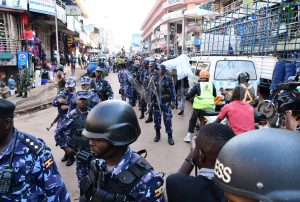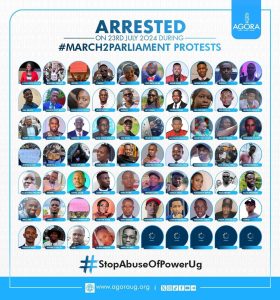Kenya
Total Shutdown Tuesday Protests
On July 16, 2024, Kenya witnessed a significant wave of anti-government protests, dubbed “Total Shutdown Tuesday.” These demonstrations, driven primarily by Gen Z youth, erupted across major towns and cities, including Nairobi. The protests initially started in response to the proposed Finance Bill 2024, which aimed to increase taxes. However, they have evolved into broader discontent with governance issues, economic hardships, and police brutality.
Protesters are demanding the resignation of President William Ruto, citing corruption, lack of accountability, and economic mismanagement. Despite President Ruto’s efforts to appease the protesters by scrapping the Finance Bill, firing his Cabinet, and cutting public spending, the unrest continues. Reports of abductions, extrajudicial killings, and police violence have further fueled the protests, with at least 39 people killed since June 18, 2024 (Pulselive Kenya) (DW) (Nation).
Uganda
Inspired by Kenya’s Protests
In Uganda, there is growing momentum for protests inspired by the recent events in Kenya. Ugandan activists are mobilizing under the banner #OccupyUganda, aiming to address rampant corruption and demand political reforms. While the scale of protests in Uganda is currently smaller, there is significant online activity and calls for large-scale demonstrations in the capital, Kampala.


Ugandan protesters are particularly focused on issues of corruption and the long-standing rule of President Yoweri Museveni. The success of youth-led protests in Kenya has emboldened Ugandan activists to push for change despite the repressive political environment in the country (Pulselive Kenya) (Nation).
Conclusion
The current protests in both Kenya and Uganda highlight widespread dissatisfaction with governance, economic policies, and state accountability. In Kenya, the protests have become a powerful movement driven by youth demanding significant political change, while in Uganda, there is a rising wave of activism inspired by their Kenyan counterparts. Both movements underscore the critical role of civic engagement and the demand for transparent and accountable governance in the region.

